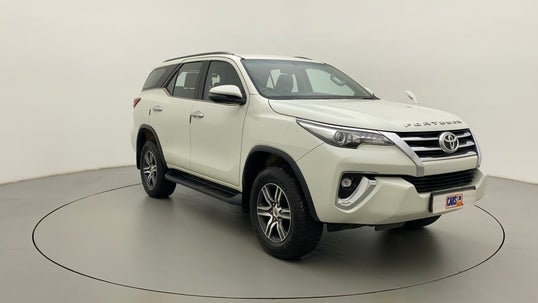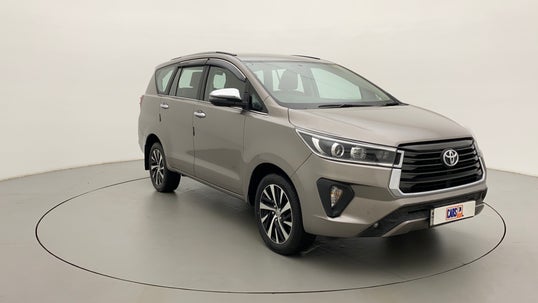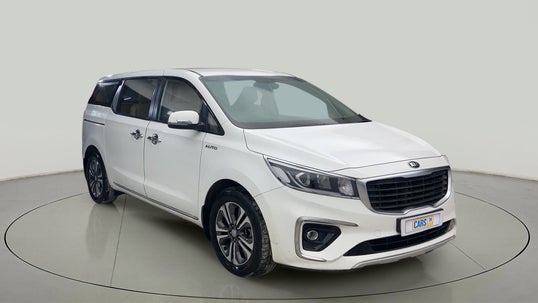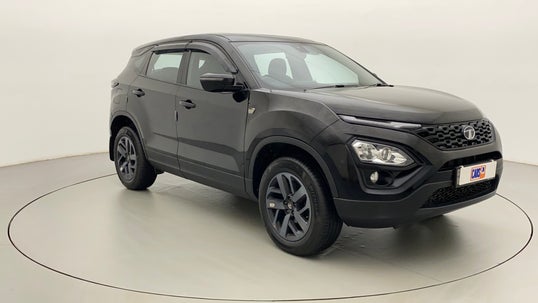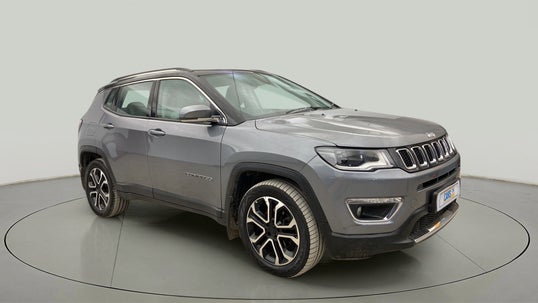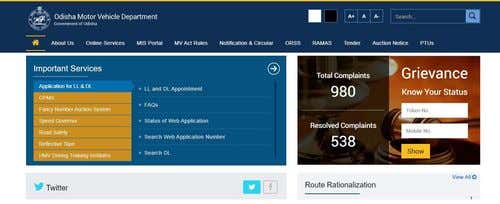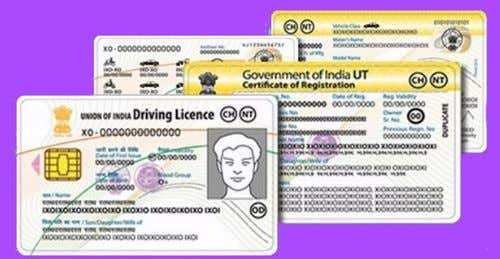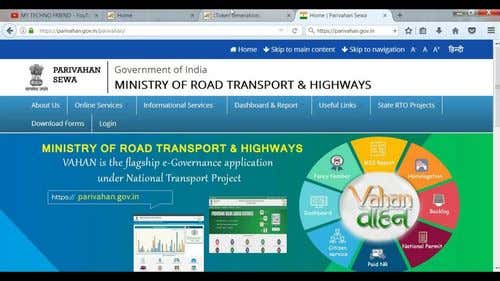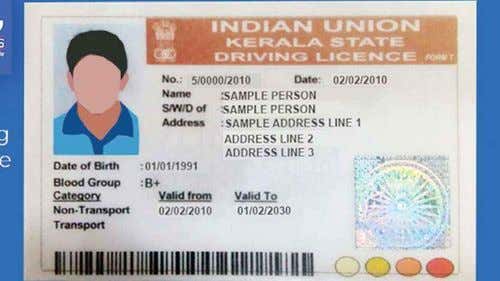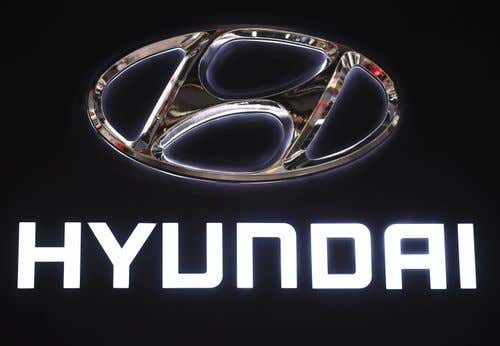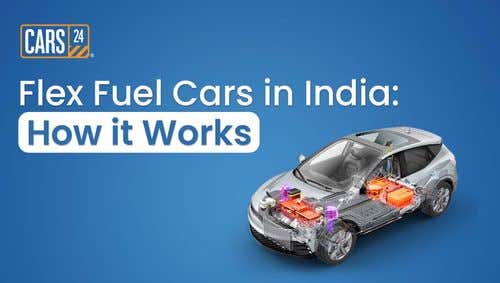What is a Hybrid Car: Benefits, Working & Types Explained

Updated on: 30th June, 2023 IST
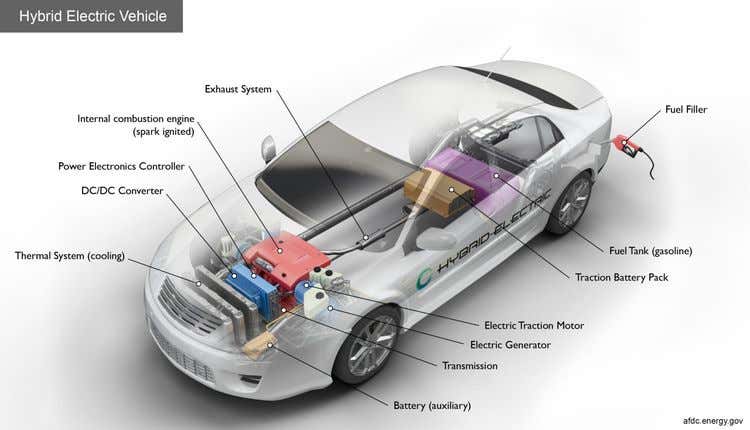
Gracefully combining conventional combustion engines with electrifying power, hybrid cars have revolutionised India's bustling streets with their harmonious blend of performance, efficiency, and environmental consciousness.
Embracing a hybrid car means embracing a greener tomorrow, where sustainability and driving pleasure coexist seamlessly. Join us on this futuristic odyssey as we explore the remarkable benefits and types of hybrid cars available in India.
Table of Contents
- What is a Hybrid Car?
- How Do Hybrid Cars Work?
- Key Components of a Hybrid Electric Car
- What are the Different Types of Hybrid Cars?
- What are the Advantages of Hybrid Cars?
- What are the Disadvantages of Hybrid Cars?
- 10 Things to Consider When Buying a Hybrid Car
- Fun Facts, Stats, And Trivia About Hybrid Cars
- The Bottom Line
- FAQs
What is a Hybrid Car?
A hybrid car is a remarkable piece of automotive engineering that combines the power of both conventional internal combustion engines and electric motors. It represents a fusion of two worlds, seamlessly integrating the best of both technologies to deliver enhanced performance, improved fuel efficiency, and reduced emissions. These vehicles are designed to operate on two power sources, switching between the petrol or diesel engine and the electric motor as needed, or even utilising both simultaneously.
How Do Hybrid Cars Work?
The working of hybrid electric cars involves a sophisticated interplay between the internal combustion engine, electric motor, battery pack, and control systems. Here's a simplified breakdown of the process:
- Engine Operation - The hybrid car starts with the internal combustion engine running, just like a conventional vehicle. The engine powers the vehicle and charges the battery pack simultaneously.
- Electric Motor Assist - During acceleration or when extra power is needed, the electric motor kicks in to assist the engine. The motor draws power from the battery pack and delivers it to the drivetrain, providing an extra boost of torque and efficiency. In some hybrid cars, only the electric motor is used when driving around the city, say up to 40 km/h, and the combustion engine is used only when going above these speeds.
- Regenerative Braking - When the driver applies the brakes, the kinetic energy that would typically be lost as heat in conventional cars is harnessed by the hybrid car's regenerative braking system. The electric motor acts as a generator, converting this kinetic energy into electrical energy, which is then stored in the battery pack for later use.
- Battery Charging - While the vehicle is in motion, the engine and regenerative braking system work together to charge the battery pack. This continuous charging process ensures that the battery pack remains sufficiently charged for electric motor assistance.
- Energy Management - Advanced control systems analyse driving conditions, battery charge levels, and power demands to optimise energy flow. These systems determine when to switch between the engine and electric motor, ensuring optimal efficiency and performance.
Read More : How Do You Decide Between A Hybrid and Electric Car?
Key Components of a Hybrid Electric Car
A hybrid electric car comprises several components that work together. Let's look at these components and understand their roles in the intricate dance of hybrid technology.
- Auxiliary Battery
The auxiliary battery, operating at a low voltage, kick-starts the car before the traction battery engages. It also powers vehicle accessories, ensuring seamless functionality.
- DC/DC Converter
Acting as a power translator, the DC/DC converter converts the higher-voltage DC power from the traction battery into lower-voltage DC power. This facilitates the operation of vehicle accessories and replenishes the auxiliary battery.
- Electric Generator
This remarkable device harnesses the rotational energy produced by the wheels during braking, converting it into electricity. The generated power flows back to the traction battery pack, maximising energy efficiency..
- Electric Traction Motor
Powered by the energy stored in the traction battery pack, the electric traction motor drives the vehicle's wheels. Some models feature motor generators that combine both driving and regenerative functions.
- Exhaust System
The exhaust system directs the engine's exhaust gases through the tailpipe, diligently reducing emissions within the system, ensuring cleaner and greener performance.
- Fuel Filler and Tank
The fuel filler acts as the channel for refuelling the vehicle's tank with fuel, which is securely stored until the engine requires it for operation.
- Internal Combustion Engine
In this configuration, fuel is injected into either the intake manifold or combustion chamber. Here, it mingles with air, and the ensuing air/fuel mixture is ignited by a spark plug, propelling the vehicle forward.
- Power Electronics Controller
The power electronics controller expertly manages the flow of electrical energy delivered by the traction battery. It controls the speed and torque output of the electric traction motor.
- Thermal System
An intricately designed thermal system maintains the optimal operating temperature range for various components, including the engine, electric motor, power electronics, and more.
- Traction Battery Pack
At the heart of the hybrid car lies the traction battery pack. It serves as the energy reservoir, storing electricity for use by the electric traction motor.
- Transmission
The transmission acts as the intermediary, transmitting mechanical power from either the engine or the electric traction motor to drive the wheels, resulting in a smooth and controlled driving experience.
Read More : What is Cost of Setting up an Electric Car Charging Station in India?
What are the Different Types of Hybrid Cars?
From full hybrids to plug-in hybrids, the world of hybrid cars offers a range of options to suit various driving needs. Here are the different types of hybrid cars you may come across:
1. Full Hybrid
Full hybrids can operate using both the internal combustion engine and the electric motor independently or simultaneously. They offer electric-only mode for short distances, and the engine takes over for longer journeys or higher speeds.
2. Mild Hybrid
In a mild hybrid, the electric motor primarily assists the engine and cannot propel the vehicle on its own. It provides a supplementary power boost during acceleration and helps improve fuel efficiency by enabling engine start-stop functionality.
3. Plug-in Hybrid
Plug-in hybrids (PHEVs) have larger battery packs that can be recharged by plugging into an external power source. They offer a longer all-electric range, allowing for zero-emission driving for a significant distance before the engine kicks in.
4. Series Hybrid
Series hybrids, also known as range extenders, rely solely on the electric motor for propulsion. The internal combustion engine serves as a generator to recharge the battery pack when it runs low. The engine does not directly drive the wheels but rather works in conjunction with the electric motor to extend the vehicle's overall range.
5. Parallel Hybrid
Parallel hybrids primarily rely on the internal combustion engine to drive the wheels, with the electric motor providing additional power during certain situations, such as acceleration or climbing steep gradients. The electric motor assists the engine in delivering improved fuel efficiency and reduced emissions.
6. Series-Parallel Hybrid
This configuration combines the features of both series and parallel hybrids. It allows the vehicle to operate in different modes, seamlessly switching between series and parallel drivetrains based on driving conditions and power demands. This flexibility optimises performance, fuel efficiency, and overall driving experience.
7. Hydrogen Fuel Cell Hybrid
These hybrid cars use hydrogen to generate electricity through a chemical reaction with oxygen. This electricity powers the electric motor, providing propulsion. These vehicles emit only water vapour as a byproduct, offering a clean and sustainable driving solution.
Read More : Upcoming Electric Cars Under 8 lakh in India in 2023
What are the Advantages of Hybrid Cars?
Hybrid cars offer a range of benefits that make them an attractive choice for drivers who prefer environmentally-conscious and cost-conscious options. Here are some key advantages of hybrid cars:
- Fuel Efficiency
Hybrid cars are renowned for their excellent fuel efficiency. By combining the power of an internal combustion engine with electric motor assistance, they achieve higher mileage and reduce fuel consumption, saving drivers money on fuel costs.
- Reduced Emissions
Hybrid cars emit lower levels of greenhouse gases and pollutants compared to conventional vehicles. With their electric motor assistance and advanced emissions control systems, hybrid cars contribute to cleaner air.
- Tax Benefits and Incentives
In many countries, including India, hybrid car owners enjoy various tax benefits and incentives. These can include lower road tax, reduced customs duties, and exemptions from certain taxes, making hybrid cars more financially appealing.
- Regenerative Braking
Hybrid cars utilise regenerative braking technology to convert the kinetic energy produced during braking into electrical energy. This energy is then stored in the battery pack for later use, enhancing efficiency.
- Quiet and Smooth Operation
The electric motor in hybrid cars operates silently, providing a smooth and serene driving experience. This reduced noise pollution enhances comfort and tranquillity, especially in urban environments.
- Resale Value
Hybrid cars tend to retain their value well over time. With the growing demand for eco-friendly vehicles, hybrid cars have a strong resale market, providing a potential financial advantage for owners in the long run.
- Innovative Features
Hybrid cars often come equipped with advanced features and technologies. These can include regenerative braking, smart driving modes, energy monitoring systems, and interactive dashboards, enhancing the overall driving experience.
Read More : Electrics Cars vs PHEVs vs Hybrid Cars: A Quick Guide
What are the Disadvantages of Hybrid Cars?
While hybrid cars offer numerous advantages, it's essential to consider the potential disadvantages before making a purchase decision. Here are some key points to be aware of:
- Higher Initial Cost
Hybrid cars typically have a higher purchase price compared to their conventional counterparts. The advanced technology and components used in hybrid vehicles contribute to the increased upfront cost. However, it's important to weigh this against the potential long-term savings on fuel and maintenance.
- Limited Electric Range
While plug-in hybrid cars offer an extended electric range, traditional hybrid cars have a limited electric-only mode range. This means they still rely on the internal combustion engine for longer journeys.
- Battery Lifespan and Replacement
Hybrid cars use high-voltage battery packs, which have a limited lifespan. The cost of replacing these batteries can be significant, and their lifespan can vary depending on usage and environmental conditions.
- Weight and Performance
Hybrid cars tend to be heavier due to the additional components such as batteries and electric motors. This extra weight can affect performance, especially in terms of acceleration and handling, compared to some conventional vehicles.
- Limited Charging Infrastructure
For plug-in hybrid cars, access to charging infrastructure is crucial. While India is rapidly developing its charging network, it may still be less extensive compared to conventional fuel stations. The availability of charging points, especially in rural areas, can be a limiting factor.
- Maintenance and Repair Costs
Hybrid cars have unique components that may require specialised maintenance and repair services. However, as hybrid technology becomes more prevalent, costs are expected to decrease over time.
Read More : Top Benefits of Electric Cars You Should Know Of
10 Things to Consider When Buying a Hybrid Car
- Evaluate the charging options available for plug-in hybrid models, such as home charging stations and public infrastructure, to ensure convenient and accessible charging solutions.
- If you have long commutes or frequently travel long distances, a hybrid with an extended electric range or a conventional hybrid may be a better fit for your needs.
- Explore the different driving modes offered by hybrid models, such as Eco, Sport, or EV mode. These modes can optimise performance, fuel efficiency, and the balance between the electric motor and combustion engine.
- Examine the efficiency of regenerative braking systems in different hybrid models. Advanced regenerative braking technology can effectively capture and store energy during braking, maximising overall energy efficiency.
- Pay attention to the comfort and features of the cabin, including seating, infotainment systems, and interior space. Ensure that the hybrid car meets your requirements for a comfortable and enjoyable driving experience.
- Inquire about the residual capacity of the battery pack over time. Understanding how the battery degrades and its impact on the electric range can help you make an informed decision.
- Research the specific maintenance requirements for the hybrid system, including periodic servicing, software updates, and potential battery maintenance. Understanding the long-term maintenance costs and schedules can assist in budget planning.
- Test-drive different hybrid models to assess their driving dynamics, including handling, responsiveness, and overall driving feel. Evaluate how the hybrid powertrain integrates with the vehicle's chassis and suspension for a smooth and engaging driving experience.
- Consider the safety features offered in hybrid models, such as collision avoidance systems, adaptive cruise control, lane-keeping assist, and blind-spot monitoring. Prioritise models with advanced safety technologies to ensure a secure driving environment.
- Investigate the reputation and reliability of the manufacturer and their hybrid technology. Look into customer satisfaction ratings, reviews, and long-term reliability data to gain confidence in the brand's commitment to quality and customer support.
Fun Facts, Stats, And Trivia About Hybrid Cars
- The first mass-produced hybrid car was the Toyota Prius, introduced in Japan in 1997. It later gained popularity worldwide and became an iconic symbol of hybrid technology.
- Hybrid cars have lower carbon dioxide (CO2) emissions compared to conventional cars. According to the Union of Concerned Scientists, hybrid cars emit 25-35% less CO2 than their non-hybrid counterparts.
- The regenerative braking system in hybrid cars helps to capture and convert kinetic energy into electrical energy, which is then stored in the battery for later use. This technology improves the overall energy efficiency of hybrid cars and reduces wastage.
- The global hybrid car market is projected to grow significantly in the coming years. According to a report by Allied Market Research, the global hybrid car market is expected to reach $856.2 billion by 2027, with a compound annual growth rate of 22.9% from 2020 to 2027.
- Hybrid cars have been embraced by celebrities and influential figures. For example, the Oscar-winning actor and staunch environmental activist Leonardo DiCaprio owns a hybrid car and has been an advocate for sustainable transportation.
- Some hybrid models offer a feature called e-Pedal, which allows the driver to control the car's acceleration and deceleration using just the accelerator pedal. When the driver releases the pedal, the car automatically slows down, capturing energy through regenerative braking.
- Hybrid cars often have higher resale values compared to their non-hybrid counterparts. The combination of fuel efficiency, lower emissions, and increasing demand for hybrid vehicles contributes to their retained value.
- Hybrid technology has expanded beyond passenger cars. Hybrid buses and trucks are being used in various cities around the world, including India, to reduce emissions and improve fuel efficiency in public transportation.
- The adoption of hybrid cars contributes to reducing our dependence on fossil fuels and helps to mitigate the negative impacts of climate change. By using less fuel, hybrid cars help reduce air pollution and conserve natural resources.
- As technology continues to advance, the future of hybrid cars looks promising. Manufacturers are investing in research and development to enhance battery efficiency, increase electric range, and reduce costs, making hybrid cars even more accessible and appealing to a wider audience.
The Bottom Line
In conclusion, hybrid cars have revolutionised the automotive landscape, offering a harmonious blend of performance, efficiency, and environmental consciousness. With their graceful union of combustion engines and electrifying power, they have redefined the way we drive in India.
By considering the advantages and disadvantages, as well as the essential factors when buying a hybrid car, we can make informed decisions that align with our needs and values. Let us embrace this exhilarating journey towards a future where automotive innovation meets environmental consciousness, as we drive towards a cleaner, more sustainable India, one hybrid car at a time.
FAQs
Q. How does a hybrid car charge its battery?
A hybrid car charges its battery through regenerative braking, where energy is captured and stored during deceleration or braking. It can also be charged through the internal combustion engine or by plugging it into an external power source (in the case of plug-in hybrid models).
Q. Can I drive a hybrid car without using conventional fuels like petrol and diesel?
Yes, hybrid cars are designed to operate using both the internal combustion engine and the electric motor. Depending on the hybrid model, you can drive for short distances using electric power alone, without using conventional fuels.
Q. Are hybrid cars more expensive to maintain?
Generally, hybrid cars have similar maintenance costs to conventional cars. However, specific hybrid components, such as the battery, may require additional maintenance or eventual replacement, which can increase the long-term costs compared to non-hybrid vehicles.
Q. How long do hybrid car batteries last?
Hybrid car batteries typically last for many years, and most manufacturers provide warranties ranging from 8 to 10 years or more. However, the lifespan can vary depending on usage, driving conditions, and maintenance. In some cases, hybrid batteries may require replacement after 10 to 15 years.
Q. Are hybrid cars suitable for long-distance driving?
Yes, hybrid cars are suitable for long-distance driving. Their combination of an internal combustion engine and electric motor allows them to deliver efficient performance over extended distances. Some hybrid models also offer excellent fuel efficiency, making them a practical choice for long journeys.
Recently Added Cars to Buy
Other Blogs
- Recent
- Featured
Popular Cities to Sell Car

